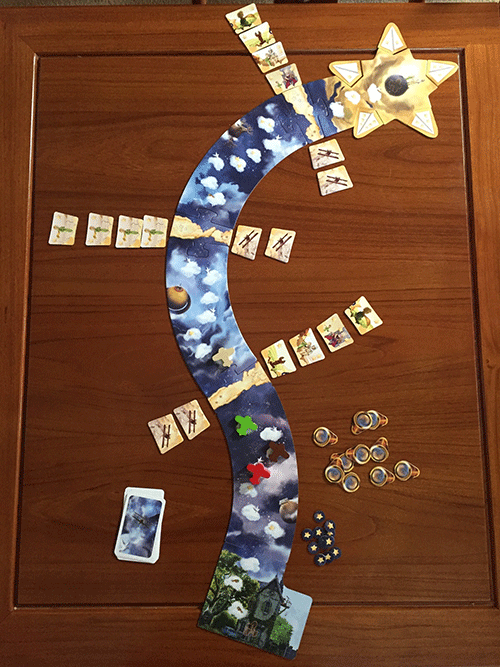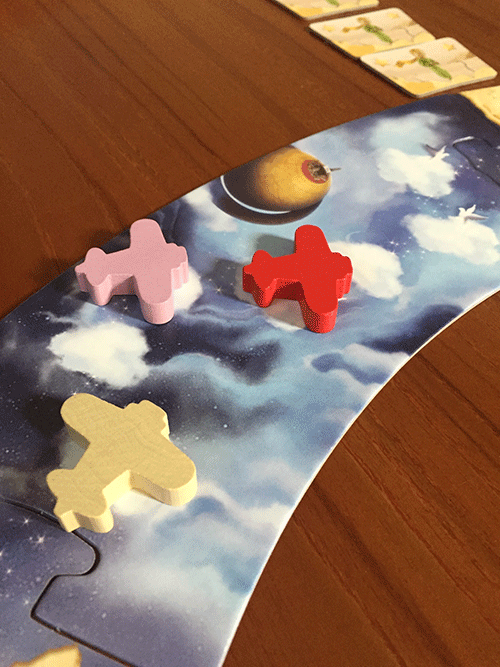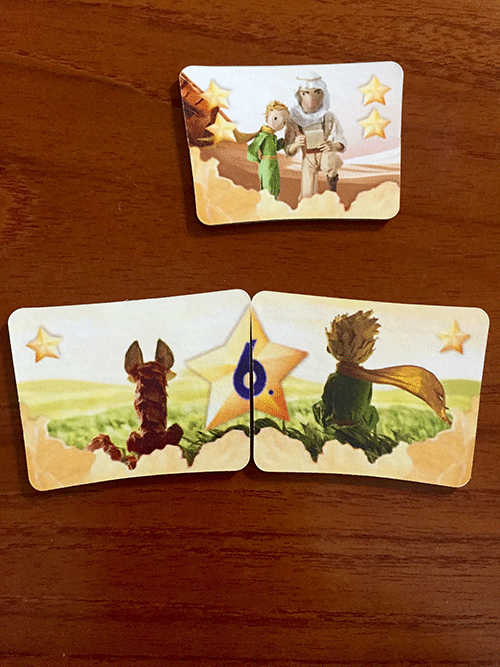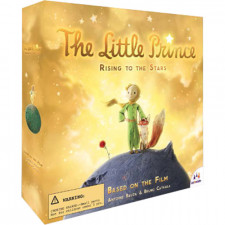The Little Prince: Rising to the Stars Review
on Sep 14, 2016
I don’t know many gamer parents who aren’t hoping to cultivate a love of gaming in their children – and I am one of them. I brought home more games from GenCon 2016 for my one year old than I did for my own collection. Unfortunately, unless there is a game out there about putting things in your mouth, I must satisfy myself with playing games my friends’ children like or finding games I can enjoy right now that I don’t mind keeping on the shelf for a few years. The Little Prince: Rising to the Stars is both
The Little Prince is an classic French novella recently adapted into a film (available on Netflix but released in cinemas internationally). Both the story and the game tell a whimsical story. Players are flying their biplanes from Grandpa’s house to a planet in the stars. Along the way they’ll collect and steal stars which ultimately decide victory. While the game is ostensibly a race, reaching the planet merely provides bonuses the faster you get there. It’s possible to win without reaching the planet at all.
Players begin the game with a handful of basic cards numbered 1 through 5. Your flight path is determined by a few double sided curved tiles. They loop and swoop across your table and the beautiful dreamscape is peppered with clouds. These clouds are your landing spaces and each one will provide additional cards, stars, or mystery telescopes. Telescopes offer the chance to steal stars from your opponents but some may force you to give up some of your own. The player in last place must play one of their cards and move spaces less than or equal to the number on that card. If they are still in last place, they can go again. That one clever little feature is what elevates this game for the adults.

“Oh my god…it’s full of wood grain.â€
Choosing where you land is critical which is why cards giving you the option to move less spaces than the number printed on them is so important. You need stars to score points, but without drawing extra cards it’s impossible to make it to the planet at the end. Land on a player however, and you reach across the table and steal a card right out of their hand. Judicious use of your high value cards can mean bouncing off your opponents like Dory swimming through jellyfish. If you time it right and finish that turn just right, no one can take their revenge.
You must eventually land on a cloud or you’ll never score any points and so it is useful to fly out ahead of your opponents. There are also a few checkpoints along the way and crossing these first gives you first choice at some tiles worth bonus stars at the end of the game. These tiles have art from the movie printed on them and are worth 1-4 stars. There is even a set of two that when placed next to each other show a panorama of The Little Prince and The Fox. Separately each tile is only worth 1 star, but together the set is worth 8. Some of these tiles are placed face down on the board, giving you the option between a sure thing or a chance at more points.

Go on, make the sound. We won’t judge.
My godson, age 5, played to collect stars and telescopes, only stealing from his dad when those scopes told him to. Peacefully oblivious to the machinations going on between those of us attempting to swipe cards from each other and jockey for position, he cruised his way to the planet before declaring this game his favorite. The rest of us flew our planes like the Red Baron, landing on planes in an attempt to take someone’s last card – ending their journey though not eliminating them – or leapfrogging from space to space hoping to get the good story tiles first.
In many ways the game, like the book, is about the journey and not the ending. Ordinarily a race game in which the player who wins may not have even finished would be a non-starter. The Little Prince works just fine for me however. It’s whimsical and beautiful but there is a tense interplay between the pilots. There’s just enough hidden information between the hands of cards and telescope tiles to eliminate over-thinking, and to ensure the little ones at the table have a shot at winning. In short, it’s a game that you can play seriously but not one you need to take seriously. I can’t wait to play it with little Raf; it has earned its place on the shelf until then.


 Customer Support
Customer Support  Subscribe
Subscribe 




 Account
Account  Wishlist
Wishlist 

